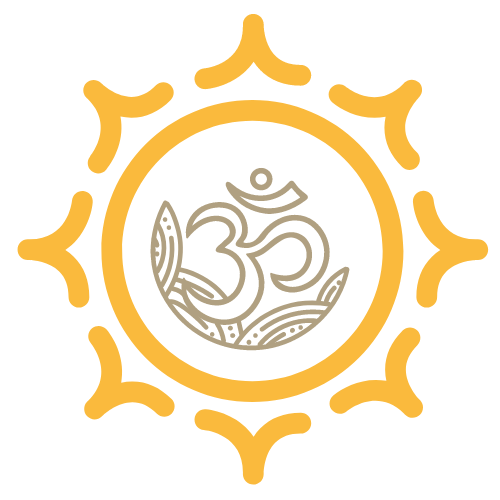Practical Yoga for Pregnancy
Congratulations on your pregnancy! You are currently carrying the power of creation in your body, and will do so for about 10 moon cycles.
In the Vedic sciences of yoga and ayurveda, this period of time is considered to be very kapha in quality. Kapha is one of three major doshas or physiological states of being and is typified by a strong presence of the elements of earth and water. Some of the characteristics of kapha include sleek, smooth, slow, thick, heavy, dense, stable and cloudy.
I invite you to consider how your ability to create life, and the resulting kapha state, is manifesting itself in your reality right now. In yogic philosophy, the state of being at any point in time is considered to be the culmination of five sheaths or layers of our existence called the koshas. By understanding how your powerful transformation is affecting each layer, you can understand how best to support yourself throughout your pregnancy, during birth and beyond.
Annamaya kosha – the physical body
Take a moment to appreciate all the ways your body is adapting to facilitate your pregnancy and the growth and nourishment of your baby:
the architecture of your brain is changing to to allow you to be more responsive and attuned to your baby
your organs are moving around to make space for baby as your diaphragm is being pushed upwards
your heartbeat and breathing rate are faster
your breasts are preparing for lactation
your ribs are spreading to make room for baby
your pelvic floor is handling more and more pressure from your growing baby
your abs are stretching out and your back muscles are compensating to handle the extra weight in front
Your posture is changing due to the changes in your centre of gravity
your blood volume is increasing by up to 45%
Your body is truly amazing!
It is during this time that the kapha element really takes hold, a time when the physical body can feel heavier and more sluggish and needs more encouragement towards movement and circulation. A wonderful way to support your body during pregnancy is to continue to incorporate gentle movement through all your limbs, daily.
Exercise – Connection to Bone
Deepening our connection with our joints and our bones is known to be very grounding. Practices that are grounding but also involve movement are a great way to support the kapha state of pregnancy.
Begin in a comfortable standing position (tadasana) and become aware of your skull balanced upon your spine.
Begin to move your head in different directions, noticing the way your skull moves around over the top of your spine and supported by it.
Now bring your fingertips onto the top of your shoulders, with your elbows bent out to the sides. Draw circles in space with your elbows, keeping the fingers on the shoulders and become aware of your arms rotating in the shoulder sockets.
Take the movement of the elbows to a forwards and backwards direction, keeping the fingers on the shoulders and notice the movement of your scapula on your back.
Now, let the head become heavy and with legs at least hip width apart, tuck your chin and roll your upper body downwards, imagining you are doing so by bending each vertebrae one at a time from the neck downwards.
When you reach your lowest point, you may wish to pause here, then roll back up in the same manner (one vertebrae at a time) and repeat as many times as you wish.
Come back to standing, taking a wide stance with your legs, and begin to circle your pelvis in the space around you, becoming aware of the connection of your spine and your pelvic bones. Circle in each direction for an enjoyable period of time.
Now bring your awareness to your hip sockets. Lift one leg at a time (perhaps supporting with a hand on the knee or against a wall) and circle your leg around in the hip socket.
Repeat the circling for your lower leg around in circles below the knee and then circle around the ankle joint. Doing the same on both legs.
Finally, come back to standing and become aware of all the bones in your feet. Allow your body to rock gently back and forward across your feet as you feel all the bones of the foot and toes moving across and supported by the ground.
Return to stillness and become aware of all your bones: your whole spine stacked upon your pelvis and legs, topped by your head. And your feet at the foundation of it all, connected to and in constant communication with the ground below you.
Pranamaya kosha - life force energy, transported by the breath
….. it can feel as if the life force is slowly being drained from you as well. It doesn’t help that your breathing muscles have to work out a new way of functioning again with the ongoing growth, as baby takes up more space inside your abodmen.
Encouraging your diaphragm to work as efficiently as possible will help ….. And by bringing more efficiency into the breath, you can circulate that precious energy around your body more, both for yourself and for your growing baby.
Exercise – 360 degree breathing
1. Lie on your side, with a pillow under your head and one between your legs (plus any others you may with to use to feel fully relaxed) and allow the breath to steady to a natural pace.
2. Bring the hand on the higher side of your body to your ribcage. Notice if you feel any movement of the ribcage expanding outwards on the inhale and any movement back in on the exhale. Once you have observed for a few rounds of breath, invite the breath to move more into the sides of the ribcage with each inhale.
3. After a period of time, move your awareness to the movement of the ribcage at the back of your body. Notice if you feel any expansion outwards on the inhale and movement back in on the exhale. Once you have observed for a few rounds of breath, invite the breath to move more into the back of the ribcage with each inhale.
4. Bring it all together now. Place your hand on the front of your ribcage and notice the movement here in and out with the breath. Invite there to be less movement out in the front and direct more of the movement to the sides and back of the ribcage.
Spend as long as feels comfortable or suitable for your energy levels on this exercise. You can progress by bringing this awareness into other more upright postures such as sitting or standing.
Manomaya kosha – mind
Did you know that many changes occur within your brain during pregnancy and early postpartum? This brain plasticity is nature’s way of supporting your attachment to and ability to care for the new life you have welcomed into the world. Your brain will never be the same again - it is evolving!
Hopefully this awareness allows you to feel a little more compassionate towards yourself, as you navigate the flood of hormones and the uncertainty of stepping into this new role in your life. Knowing that you are hard-wired to care for your child, can you allow yourself to be aware of the way your changed mental state feels, rather than feeling that you need to react to or reject it?
The yogic practices of mantra and mudra are two simple yet powerful ways to assist.
Exercise – Mudra
A mudra is a symbolic gesture made with the body, most often with the hands/fingers (mudra means seal). By holding the body in specific ways, energy is directed to flow within the subtle body, supporting the desired state of the practitioner. We will practice prithvi mudra which helps to balance the earth element within the body.
1. Find a comfortable position to be, and gift yourself at least 5-10minutes of space and time.
2. Close your eyes and let your breath steady
3. Create prithvi mudra with your hands, to help balance the earth element in your body:
a. Bring your hands to rest either on your thighs if sitting or at your sides if lying, with palms facing up.
b. Bend your ring finger so that the tip of it touches the tip of your thumb, on each hand.
d. Ensure you have enough pressure to feel the mudra but not too much that it is uncomfortable to hold.
4. Hold prithvi mudra for as long as feels comfortable or you have time for, allowing yourself to come back to the sensation of holding the mudra and/or the steadiness of your breath if the mind wanders.
Vijnanamaya kosha – wisdom and intuition
Matrescence has an innate way of connecting women more deeply with their creative and intuitive abilities. If you didn’t believe in or rely upon your intuition before now, perhaps you have sensed it in the way you respond to your growing body, or the movements of your baby. Have you ever noticed how you unconsciously bring a hand up to rub or pat your belly?
Sometimes, it can be difficult to distinguish between what is your intuition, or gut instinct, and what is your busy mind. Modern life is a constant barrage of inputs from the outside world, so tuning in to our internal knowing can become quite difficult. Simple visualisation techniques can help to direct your attention inwards and give you confidence in deciphering whether it is your mind’s interpretation of external content or the inner mother of your heart speaking to you.
Exercise – Connecting to your intuition
1. Find a moment of quiet and calm when you first practice this exercise.
2. Imagine a light shining down upon you from above your head. You may like to imagine this is coming from ‘source/the universe/divine light’ or any other name you wish to use to describe a greater intelligence.
3. Allow yourself to feel a sense of light entering into your body through the crown of your head and travelling all the way down through your spine, out through your feet (or sitz bones if you are sitting) and into the ground, travelling deep down as if to the core of the earth.
4. With this beam of light connecting you from the sky to the earth, allow the light to now swirl around and within your body in an anti-clockwise direction, getting brighter and stronger as it fills up your whole body with light.
5. When you feel full of light, know that you are in your ‘inner power’ – tapping into your mother-wisdom. Bask in this for a moment.
6. Ask your question, or notice what first comes up for you. It may help to journal or free-draw if this assists you to connect to the information you are intuitively receiving.
7. When you are finished your reflection or enquiry, gather the light you have received from the sky and earth towards you and create a ball of light. Let this rest at your heart centre before you complete the practice.
Anandamaya kosha - bliss state
Have there been any moments, soon after conception or at whatever point in time the realisation landed for you that you are going to become a parent, that you experienced an almost indescribable awe at the miraculous act of creative expression that you are? Even if these were just fleeting memories, in those moments, what you were experiencing is sometimes described as ananda or ‘bliss’ in the yoga traditions.
The more opportunities you create for yourself to experience this state of being, the easier it becomes to attain it, just like exercising a physical muscle in your body. One way to prepare you for this is to encourage your heart to be open. When your heart is open, you are more connected to the feelings of joy and happiness, more connected to santosha (contentment).
Exercise – Heart Connection with Baby
Practise this exercise when you wish to connect more deeply with your baby.
1. Find a moment of quiet and calm.
2. Bring awareness to your breath and allow it to soften and steady.
3. Come to an awareness that you and your baby are connected through your breathing and your heartbeat. You are breathing for your baby. Your heart is circulating blood, oxyen and nourishment to your baby.
5. With your next inhale, imagine you are breathing in love and then with the following exhale, breath that love to your baby.
6. With every additional breath, breathe in more of the endless love you have available for your baby and send it to them on the exhale.
7. Continue the practice as long as feels comfortable.
What Next?
Wishing you all the very best on your parenthood journey.
If you are interested to explore deeper or to continue your yoga journey, there are a number of ways we can support you:
· Free online resources
· An online program for pregnancy and parenthood (Practical Yoga Philosophy for Parenthood), which dives much deeper into many of the concepts introduced here. (Use 30offclaire at checkout for $30 off)
· Our in-person, 8 week prenatal program, pregnancy partner classes and 1:1 yoga and pelvic health consultations
· Other upcoming prenatal and postnatal yoga events, workshops and retreats
Or feel free to reach out directly via our various contact options.





